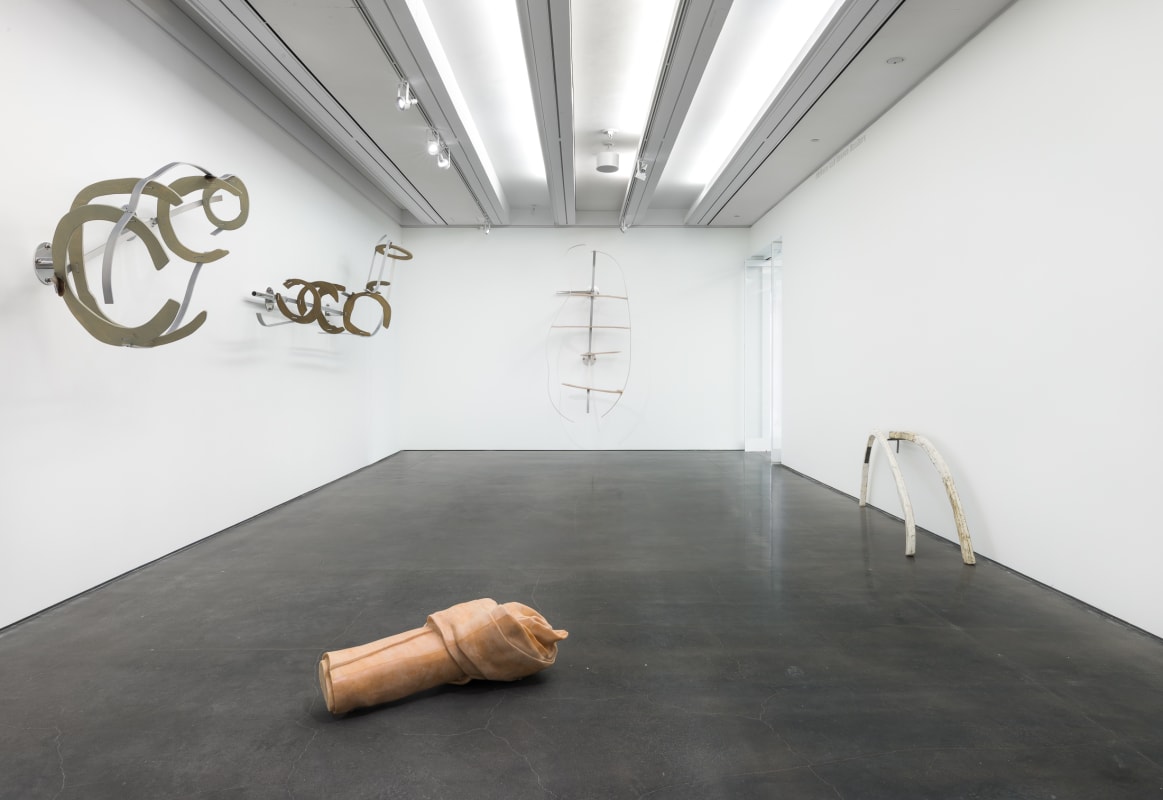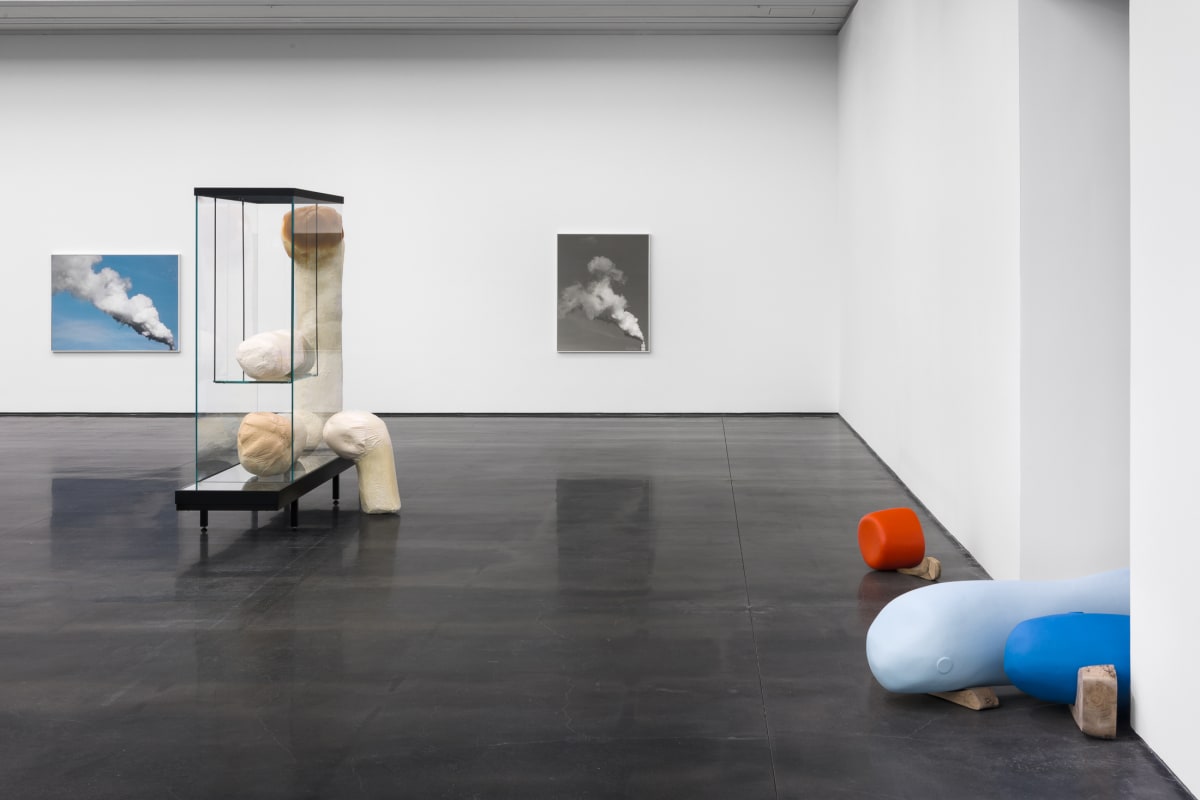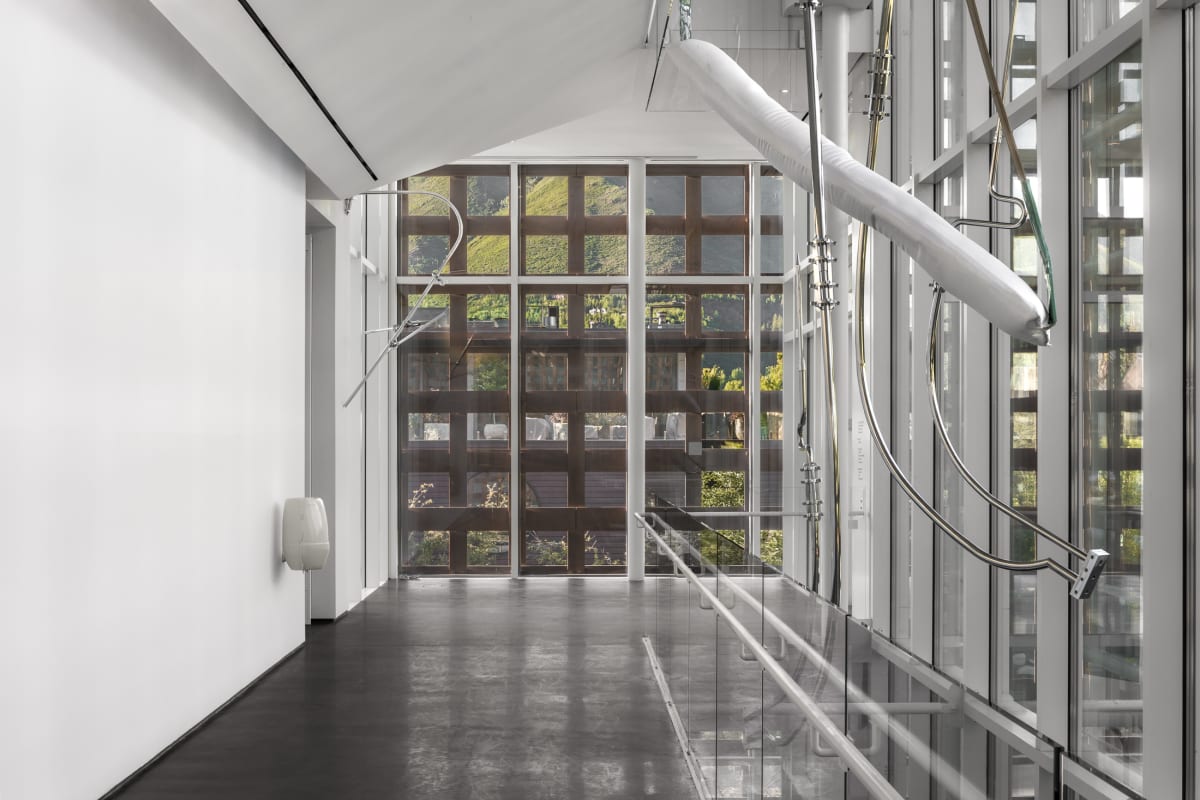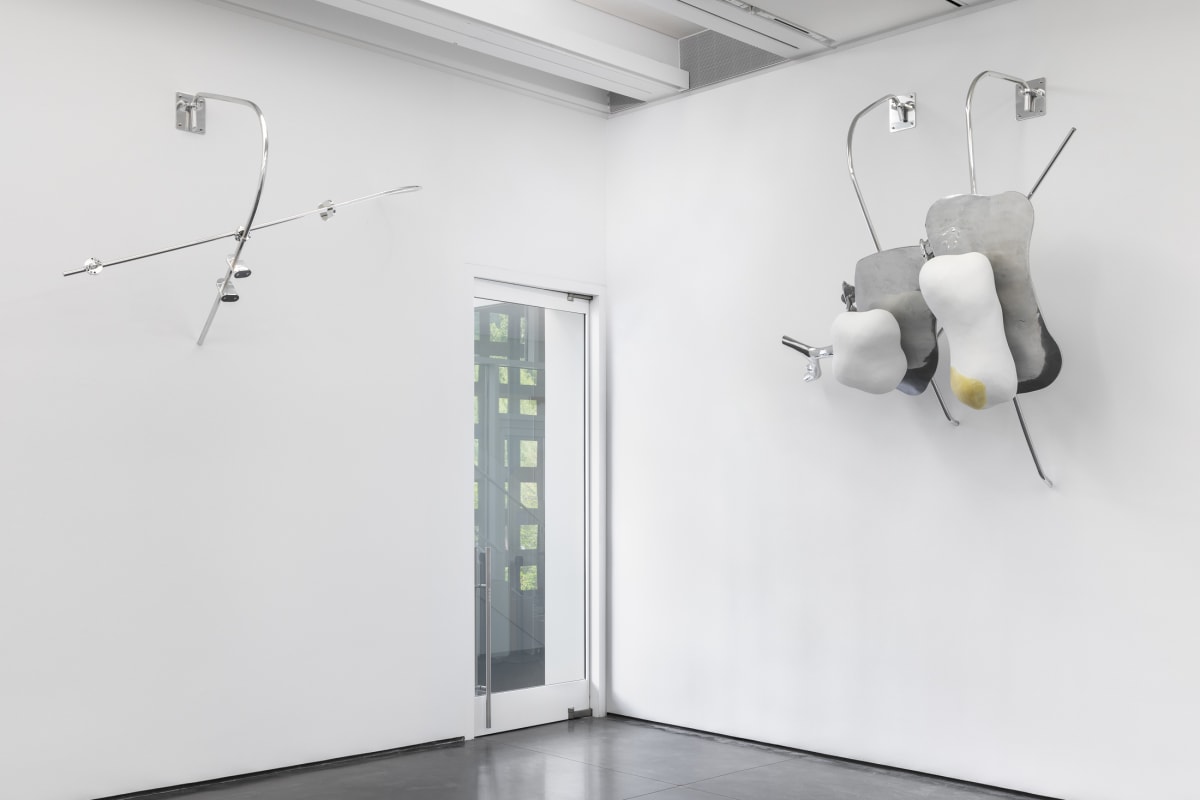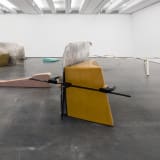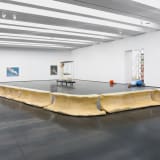Nairy Baghramian - Jupon de Corps Aspen Art Museum
The Aspen Art Museum is pleased to present Jupon de Corps, a major solo exhibition by Nairy Baghramian that brings together significant constellations of artworks made over the past decade for the first time. Displayed across two floors, the exhibition establishes a personal and poetic dialogue between key works from the artist’s output, alongside a new body of sculptures specially conceived for the museum’s outdoor commons.
Jupon de Corps brings to the fore foundational aspects of Baghramian’s practice, such as the artist’s sustained dialogue with art historical traditions of the twentieth century; her ongoing interest in expressions of bodily attitudes; the symbolic—social and psychological—charge of prosthetic and mechanical apparatuses deployed in physiognomic corrections; as well as her tireless experimentation with a wide array of materials, ranging from steel to silicon, resin, leather, wax, and wood. The reconsideration of sculpture’s modes of production and institutional display is at the heart of Baghramian’s interest in combining formal and material languages from the realms of art, design, technology, and nature. Works of different materials and scale will populate the museum galleries, creating intimate and at times uncanny atmospheres animated by fragmented forms that evoke bodily environments and junctures, and suggest different states of matter.
The show title borrows from a French expression translating as “petticoat.” The structure and silkiness of this undergarment carries a symbolically rich array of associations evoking the idea of a layer—therefore a border—in an anthropomorphic context. Covering up and building out parts of the body, in direct contact with the skin, a petticoat signifies both intimacy and privacy: by extension, it speaks to the relational charge of the gaze seeking to reach beyond a given boundary. In her work B 75, BH, Mod. NB, Ref. CO, MM (2012)—a nod to Claes Oldenburg’s Ghost Wardrobe (for M. M.) (1967)—two large concrete hangers carry stringy rubber spirals forming a pair of bras. Brightly colored and playfully oversized, the eye-catching lingerie points to a human figure that is absent yet implied in the mechanics of seduction and government of bodily forms.
As often with Baghramian’s works, many of the sculptures appear in clusters, establishing visual and physical connections between each other and with the existing infrastructure of the museum space. Slip of the Tongue (2015) implicates the formal conventions of exhibition display through the use of a raised platform and a large glass vitrine to showcase a trio of unclassifiable appendices. The newly commissioned outdoor sculptures, a continuation of Baghramian’s Sitzengeblieben (Stay Downers) characters cast in a palette of candy colors, animate the walkway with their relaxed, friendly demeanor and bulbous shapes.
Hanging within the Museum’s iconic stairwell, Headgear (2016) forms part of a broader investigation into dynamics of constriction and release, particularly within the corrective mechanisms of dental devices. Similar orthodontic tension is further deployed in the galleries, through the curved lines of Chin Up (First Fitting) and in the Scruff of the Neck series (all 2016), whose modular elements in plaster and aluminum allude to the dental technology as the mouth’s interior décor, forcing its parts into place.
Idea, language, and form are inextricably linked in Baghramian’s sculptures. Her works stage and connect different meanings, functions, and symbologies associated with the architecture of the body and its potential transformations—desired or imposed. Two works from the series Maintainers call attention to the mechanisms that physically hold the pieces together, balancing strength and fragility—a principle echoed in the closely-spaced segments in aluminum and synthetic resin that make up French Curve (2014), titled after the technical template used to draw smooth curves in tailoring. This large, floor-based piece sits on a leisurely horizontal axis, conjuring up the image of a backbone finally afforded some rest from its duties of support.
Playfully engaging with different densities and postures—leaning, standing, bracing against, stretching through walls—the artworks reflect on proximity as a spatial condition of both intimacy and necessity, and authority and vulnerability. Altogether, these works establish a conversation on the principle of improvement through constriction, and a pressure toward the optimization of the self. Their liminal nature tests the borders of possible transformations occurring in the body, in both its exterior and interior expressions and complexities.
This exhibition is curated by Nicola Lees, Nancy and Bob Magoon Director, and Stella Bottai, AAM Curator at Large.
Installation views: Daniel Pérez

